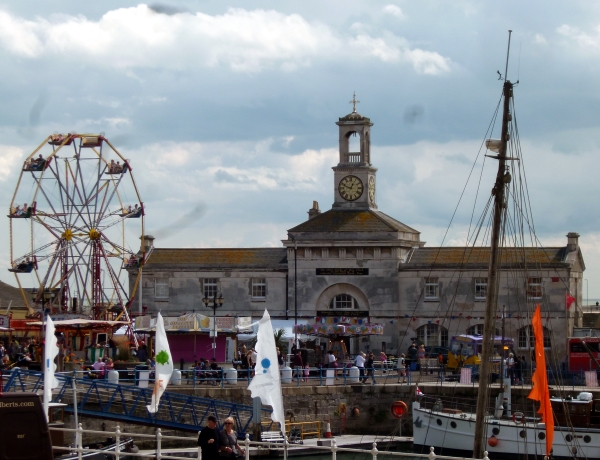
The image for Day 55 of VM_365 celebrates Ramsgate’s rich architectural heritage.
In Britain many buildings are listed by English Heritage for their outstanding historical or architectural merit and Ramsgate has one of the highest densities of listed buildings in the country.
The Clock House at Ramsgate Harbour, currently housing the Ramsgate Maritime Museum, is one of the 5.5% of buildings that enjoy a II* listing, regarded as particularly important buildings of more than special interest.
The early work to construct Ramsgate Harbour was undertaken by John Smeaton between 1774 and his death in 1792. In 1794, after a trial period following Smeaton’s death, Benjamin Wyatt took over as engineer for the Ramsgate Harbour Trust. Although Smeaton had completed the basic structure of the harbour, Wyatt was responsible for maintenance and the construction of additional harbour buildings and he produced designs for several improvements and new structures.
On Wyatt’s death on 7th February 1807, he was succeeded as engineer for the Ramsgate Harbour Trust by the Scottish civil engineer John Rennie who had carried out many architectural projects for the Admiralty and had consulted with Wyatt on his plans for Ramsgate Harbour. The Clock House building was originally designed by Wyatt and George Louch, his deputy engineer who had been appointed in 1801, as a single storey store house and offices. The building was constructed by Rennie in 1817 from their design.
John Rennie’s second son, also called John, succeeded his father in his civil engineering business in 1820 and also as the engineer for Ramsgate Harbour. Rennie junior continued the maintenance and construction works in the harbour, which included the additions that were made to add the upper storeys and tower to the harbour building turning it into the Clock House that we see today.
The operation of a clock and a unique solar meridian established for Ramsgate, 5 minutes and 41 seconds ahead of Greenwich Mean Time, was described by a naval officer in 1837:
‘In the dome is an astronomical clock, and a meridian line, fixed, by means of a wire, which is used to ascertain its error, for the purpose of rating the chronometers of vessels entering the port…’
The original clock was built by John Moore and Sons of Clerkenwell under the supervision of physicist Henry Kater who had made advances in the design of astronomical clocks. A brass transit line marking the Ramsgate meridian was set in the first floor of the Clock House building until it was stolen in 1975.
Accurate time pieces were essential to navigation in the early 19th century and their calibration to the fundamental Greenwich Mean Time datum was equally important. Many harbours had prominent clocks that could be observed and used to calibrate on-board navigational clocks by ships that entered the ports.
In 1846 the clock in the tower was replaced with a new clock mechanism made by London clock maker Edward John Dent. With four, 5ft diameter gas lit dials, operated by rods to keep the mechanism away from the gas lights, the mechanism was housed in the dome along with the meridian apparatus. At Dent’s suggestion, from the 1st of November 1848, the new clock at Ramsgate showed Greenwich Mean Time, bringing an end to Ramsgate’s idiosyncratic time zone.
Reference:
Anon. 1837. A brief history of Dover and Ramsgate Harbours; with a description of the Coast, between Dungeness, and the Isle of Thanet, and remarks on the probable construction of a Harbour, between the South Foreland and Sandwich Haven. By a Naval Officer. London.
Matkin R.V. 1976. The Construction of Ramsgate Harbour. Transactions of the Newcomen Society, 48(1), pp. 53–72
Robinson J. M. 1973. Samuel Wyatt at Ramsgate. Architectural History Vol. 16, (1973), pp. 54-59+95-96